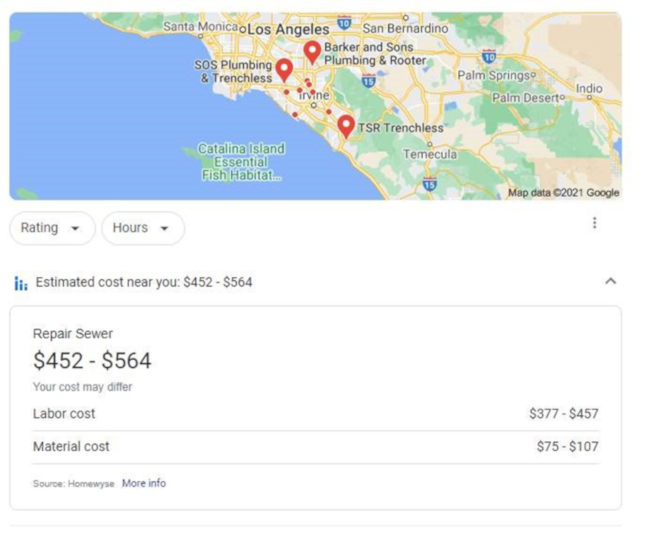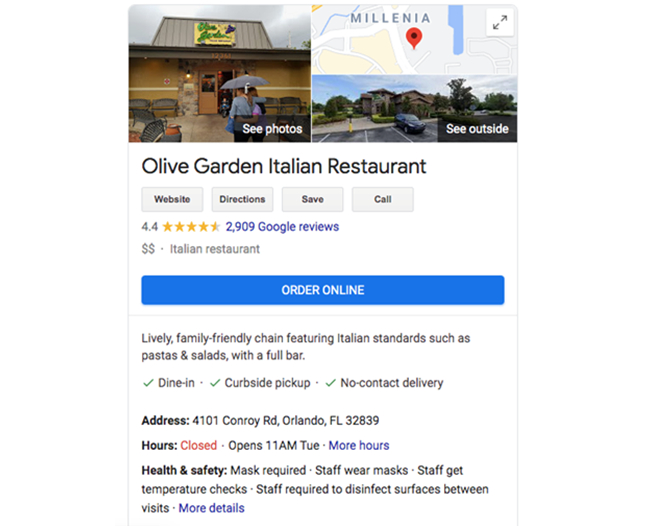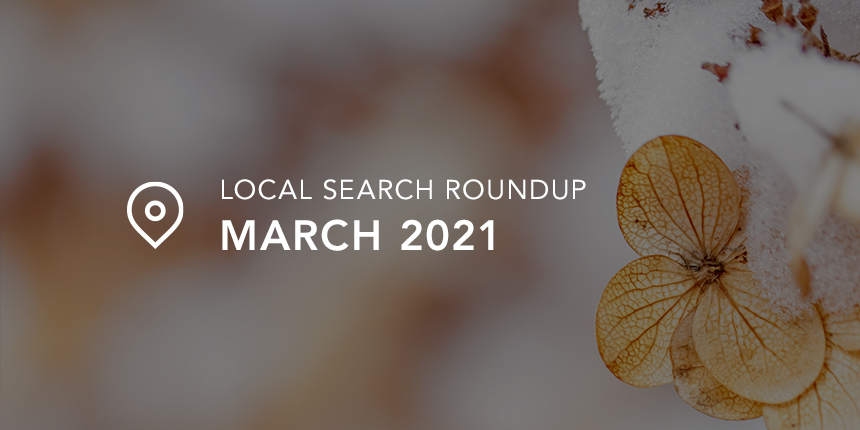An algorithm update, free listings on Google Hotels, and a shiny new “estimated cost” field in the local pack. March brought a series of iterative changes to local search—some experimental in nature, others seemingly overdue—so let’s get straight to it.
Google’s latest search ranking algorithm update
In the last week of February, Google rolled out a local ranking algorithm update. Initial reports suggest that car dealerships, bars/pubs, and accounting/financial firms are among some of the most impacted. There is no definitive pattern of positive or negative ranking impacts from these changes. Instead, businesses in those categories simply need to be aware that the update may be the underlying cause of any unusual gains or losses in the past month.
Because Google itself may not know the full impact of its algorithm updates (which is why it makes no official announcements of that nature), local SEO experts need to keep their ear to the ground and monitor fluctuations in the algorithm themselves. It is up to them to determine whether or not a fall in rankings is due to an update or an actual, resolvable issue. That’s why the local search ecosystem is always going to require experts to monitor and react to changes.
So, unsurprisingly, there isn’t anything specific to do when ranking algorithm updates go live. Acknowledged SEO best practices continue, but this update may explain any recent fluctuations.
Free listings on Google Hotels
In recent years, Google has provided free versions of its online direct sales endeavors such as Google Shopping and Google Flights. It is now continuing this trend by offering a free option for its Google Hotel listings. This new free section of Google Hotels will appear to users who search for “all options”.
The largest difference between these new free listings and their paid equivalents is their ranking order. Paid hotel links will always outrank their free counterparts, with paid placements ranked according to Google’s ad auction. Further down the results page, free booking links will be ranked based on their utility to the user. For booking partners that receive leads through free placements, Google won’t collect any fees or payments for user engagement with the links.

Credit: Google
With the travel industry kneecapped by the COVID pandemic, this is a good time both for Google and businesses to experiment with new methods of lead generation. Lower overall volume gives Google time to work out any issues, while brands within the travel industry are in need of new ways to attract limited numbers of clientele. This also plays into Google’s larger strategy of becoming an all-encompassing advertising and sales platform, including competing with the likes of Yelp and Trip Advisor through its reviews. Many unique features for hotels are already present within Google My Business (GMB) and Google is only looking for more ways to increase its share of the travel market.
If you are a hotel or travel company interest in participating in Google Hotels, you may want to take a look at Google’s official guidance on the subject.
Google testing “Estimated cost near you” in the local pack
In a simple but potentially impactful test, Google is displaying the estimated costs of home improvement services directly in search results. This information is acquired through a partnership with Homewyse, an independent reference for home production, installation, and service estimates within the US. The estimated costs look wholly organic when they appear, though they are not guaranteed by either Google or the business itself.

This looks to be another step towards Google results becoming clickless. With more information presented through knowledge panels, attributes, and other visual real-estate, Google’s SERP is providing more utility for users but less traffic for websites. This does mean, however, that those who follow through on links become higher intent customers. If Google provided all the information a user needed and they still followed through to a website or landing page, they’re clearly ready to move to the next stage of their journey to purchase. As such, it’s more vital than ever before to rank in the local pack.
If your business offers products or services locally, you may want to ensure that your price estimates are accurate. After all, it would be a shame to achieve prominence in the local pack—complete with competitive estimate—only for users to be stung by a much higher price tag when they get to the checkout.
Big blue “Order online” buttons now native to GMB
We’re starting to see those prominent “Order online” buttons for restaurants that have neither third-party partnerships nor integration with Order Food with Google. Previously, restaurants that only had their own “Order ahead” links weren’t eligible for that big blue CTA. Now they are.

There is, however, still one catch with the blue order button: if a restaurant offers multiple ordering services, there is no control as to which service the button will link to. For example, if a restaurant has delivery partnerships with Grubhub, Seamless, Delivery, Uber, and Postmates, as well as their own in-house service, the blue button could lead to any one of those order methods. There is no way to control this or even guarantee a specific service is in the rotation.
For restaurants that want to drive as many orders as possible, the big blue button is a safe bet because it will almost certainly drive click volume. For restaurants that only offer their own delivery service but still can’t see the blue button option, typical “Order ahead” links will have to suffice for now.
62% say customer photos influence purchase decisions
The importance of imagery in advertising is well known. Every business knows that they should populate their GMB profiles and online stores with images of, well, everything relevant. What is less commonly understood is that you should also encourage your customers to provide their own images to attach to your online listings and profiles.
A recent eMarketer survey found that a majority of consumers are more likely to buy a product if they can see photos taken by other customers. This survey asked shoppers from the US, Canada, Australia, France, Germany, and the UK why they seek additional context about a product (like customer photos). They responded:
- It may highlight something that wasn’t obvious (24%)
- Like to see a product in action before they buy (21%)
- Feel more confident that the reviews are accurate (17%)
- It’s easier to see the quality of a product (17%)
- It’s easier to see the size/fit or color of a product (11%)
- It’s easier to see the material of a product (7%)
It’s interesting to note that all of the reasons listed can be accommodated by the business itself. For example, if the resources are available, a business could provide images of the product in action or compare its size and color to other items. Seems like a huge undertaking? Then consider crowdsourcing product and store images from your customer base. Tangible benefits will result, but remember that user-generated content (UGC) always has to be closely vetted.
The local search ecosystem is in a constant state of flux, but we’re always one step ahead of the game. Find out how we help national brands drive transformative growth from the enterprise level down to hyperlocal moments. Let’s talk.




